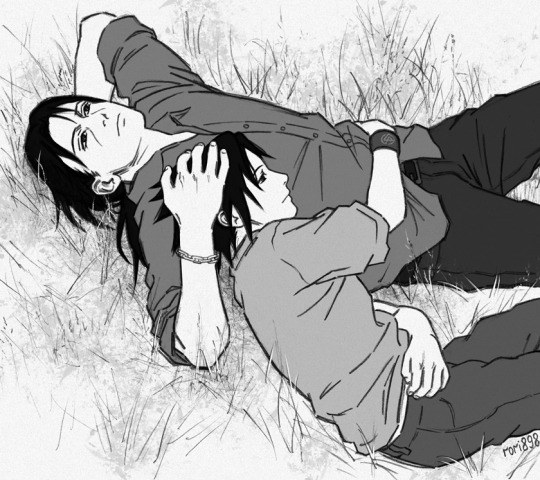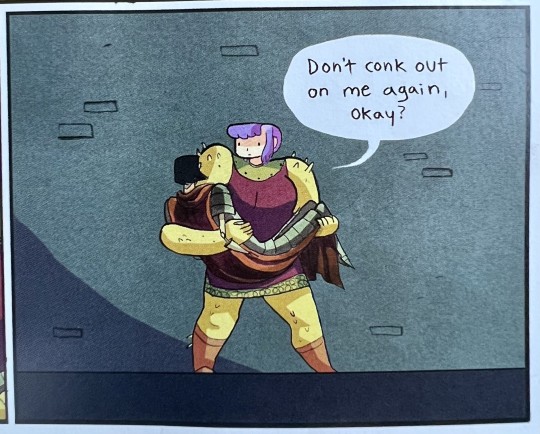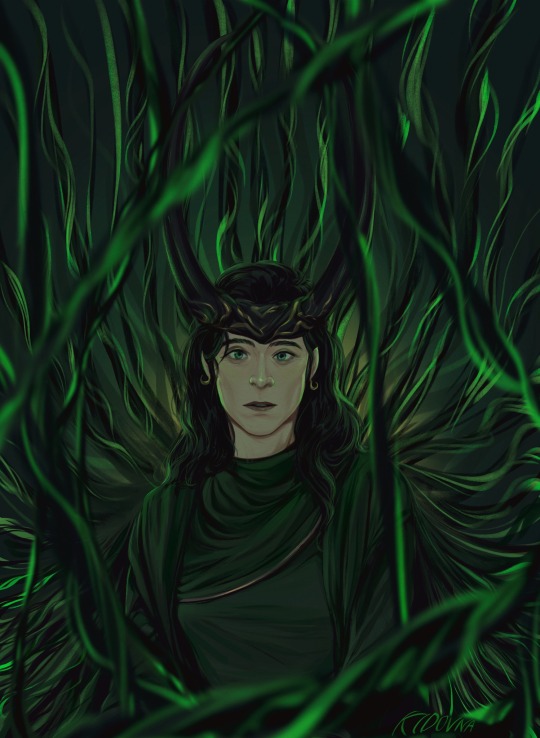#inspired by the film
Photo

#itachi#sasuke#uchiha brothers#naruto#naruto fanart#naruto au#inspired by the film#the ballad of jack and rose#but i'm disappointed with the ending#open to discuss it#my art
3K notes
·
View notes
Text
Shadow Christmas Ornament
Merry Christmas, y'all, my heart is broken.

Here it is in the dark.

#fanart#shadow the hedgehog#christmas ornament#christmas tree#project shadow fan film#Inspired by the film#It was so good and now my heart is broken#shadow the hedgehog fanart#Sad baby boi#Shadow needs a hug
1 note
·
View note
Text

metal ⚔️🦈
#my art#nimona#nimona fanart#ballister blackheart#ballister boldheart#words can’t explain how much this film and its graphic novel mean to me <3#this film has been such a huge art inspiration ahhh i adore it
17K notes
·
View notes
Text


Oops my hands slipped. Nimona drawings
(first image inspiration from the comic:

#Nimona#nimona netflix#ballister boldheart#ambrosius goldenloin#my art#Puppy man needs to be held#Actually did a Nimona-inspired drawpile after seeing the film with coworkers but it's filled with NDA information HAHAHA#ONE DAY I can post those...
12K notes
·
View notes
Text

save me fem presenting loki… fem presenting loki save me….
bonus:

#inspired by wynsvre’s fem loki art#loki#loki laufeyson#mobius#mobius m mobius#lokius#artovna#marvel#marvel cinematic universe#loki series#lokius fanart#if you read that wow in Owen Wilson’s signature wow voice you’re so real#I’m gonna disappear and finish my film now
4K notes
·
View notes
Text
5 Tips for Creating Intimidating Antagonists
Antagonists, whether people, the world, an object, or something else are integral to giving your story stakes and enough conflict to challenge your character enough to change them. Today I’m just going to focus on people antagonists because they are the easiest to do this with!
1. Your antagonist is still a character
While sure, antagonists exist in the story to combat your MC and make their lives and quest difficult, they are still characters in the story—they are still people in the world.
Antagonists lacking in this humanity may land flat or uninteresting, and it’s more likely they’ll fall into trope territory.
You should treat your antagonists like any other character. They should have goals, objectives, flaws, backstories, etc. (check out my character creation stuff here). They may even go through their own character arc, even if that doesn’t necessarily lead them to the ‘good’ side.
Really effective antagonists are human enough for us to see ourselves in them—in another universe, we could even be them.
2. They’re… antagonistic
There’s two types of antagonist. Type A and Type B. Type A antagonist’s have a goal that is opposite the MC’s. Type B’s goal is the same as the MC’s, but their objectives contradict each other.
For example, in Type A, your MC wants to win the contest, your antagonist wants them to lose.
In Type B, your MC wants to win the contest, and your antagonist wants to win the same contest. They can’t both win, so the way they get to their goal goes against each other.
A is where you get your Draco Malfoy’s, other school bullies, or President Snow’s (they don’t necessarily want what the MC does, they just don’t want them to have it.)
B is where you get the other Hunger Games contestants, or any adventure movie where the villain wants the secret treasure that the MCs are also hunting down. They want the same thing.
3. They have well-formed motivations
While we as the writers know that your antagonist was conceptualized to get in the way of the MC, they don’t know that. To them, they exist separate from the MC, and have their own reasons for doing what they do.
In Type A antagonists, whatever the MC wants would be bad for them in some way—so they can’t let them have it. For example, your MC wants to destroy Amazon, Jeff Bezos wants them not to do that. Why not? He wants to continue making money. To him, the MC getting what they want would take away something he has.
Other motivations could be: MC’s success would take away an opportunity they want, lose them power or fame or money or love, it could reveal something harmful about them—harming their reputation. It could even, in some cases, cause them physical harm.
This doesn’t necessarily have to be true, but the antagonist has to believe it’s true. Such as, if MC wins the competition, my wife will leave me for them. Maybe she absolutely wouldn’t, but your antagonist isn’t going to take that chance anyway.
In Type B antagonists, they want the same thing as the MC. In this case, their motivations could be literally anything. They want to win the competition to have enough money to save their family farm, or to prove to their family that they can succeed at something, or to bring them fame so that they won’t die a ‘nobody’.
They have a motivation separate from the MC, but that pesky protagonist keeps getting in their way.
4. They have power over the MC
Antagonists that aren’t able to combat the MC very well aren’t very interesting. Their job is to set the MC back, so they should be able to impact their journey and lives. They need some sort of advantage, privilege, or power over the MC.
President Snow has armies and the force of his system to squash Katniss. She’s able to survive through political tension and her own army of rebels, but he looms an incredibly formidable foe.
Your antagonist may be more wealthy, powerful, influential, intelligent, or skilled. They may have more people on their side. They are superior in some way to the protagonist.
5. And sometimes they win
Leading from the last point, your antagonists need wins. They need to get their way sometimes, which means your protagonist has to lose. You can do a bit of a trade off that allows your protagonist to lose enough to make a formidable foe out of their antagonist, but still allows them some progress using Fortunately, Unfortunately.
It goes like… Fortunately, MC gets accepted into the competition. Unfortunately, the antagonist convinces the rest of the competitors to hate them. Fortunately, they make one friend. Unfortunately, their first entry into the competition gets sabotaged. Fortunately, they make it through the first round anyway, etc. etc.
An antagonist that doesn’t do any antagonizing isn’t very interesting, and is completely pointless in their purpose to heighten stakes and create conflict for your protagonist to overcome. We’ll probably be talking about antagonists more soon!
Anything I missed?
#writing#creative writing#writers#screenwriting#writing inspiration#writing community#filmmaking#books#film#writing advice#antagonists#villains#writing antagonists#5 tips for creating intimidating antagonists
2K notes
·
View notes
Text

Single Serve Matilda Chocolate Cake
#single serve#small batch#matilda#chocolate#cake#film inspired#baking#recipe#birthday#kids#layer#frosting#fudge#dark chocolate#annikaeats
2K notes
·
View notes
Text

a win for tortured writers and haunted artists everywhere
#alan wake#alan wake 2#the game awards#tga#the game awards 2023#tga 2023#for real. I was so happy to see it win that first Best Narrative I could’ve screamed#to see a game go places no game— and I’m starting to think no film or tv show either— has ever gone creatively#(and execute the landing SO ENCHANTINGLY WELL)#to see a game like that receive even part of the recognition it so richly deserves… it makes my heart swell.#I’ve never felt so creatively inspired in my life. I’m so happy
3K notes
·
View notes
Text

Late night at the ER
#would u believe me if I said this was randomly inspired by a screenshot of soldier from a team f2 fan horror film....#transformers#mtmte#maccadam#maccadams#transformers fanart#tf idw#more than meets the eye#frootertooter archive#lost light#ratchet#the wee woo wee woo guy
1K notes
·
View notes
Text

Some downtime
Designs by @nicktoonsunite
#the one time I go searching for 2000s cartoons for my film inspo#and I had to come out of it with a new fixation#ALso designs inspired by izbubbles#their stuff is so#gnaws#nicktoons unite#the fairly oddparents#danny phantom#jimmy neutron#timmy turner#spongebon squarepants#danny fenton#my art
993 notes
·
View notes
Link
#mermaid#poc mermaid#halle bailey#the little mermaid#redbubble#icartist#indigochronicles#my art#inspired by the film#regency dress#chemise a la reine
0 notes
Text

like bathers in a painting
Foxspit.com
#photography#my photos#female photographers#film photography#vintage#romantic aesthetic#moodyports#new england#maine#coquette#female form#fine art inspiration#fine art model#fine art nude#fine art photography#maine farmhouse#Maine artist
1K notes
·
View notes
Text



SYDNEY ADAMU and CARMY BERZATTO
#been inspired by the photosets created by fandom back in the 2010s when people would create stylistic photos of their fav show/film#so this is kind of my mission to bring these kind of photosets back! because they're so fun to make! anyway hope you all like them!#sydcarmy#sydney x carmy#carmy x sydney#sydcarmyedit#thebearedit#the bear fx#the bear hulu#the bear#sydney adamu#carmen berzatto#jeremy allen white#ayo edebiri#carmen x sydney#carmen x syd#syd x carmy#graphics#edit#tvandfilm#mygraphics
856 notes
·
View notes
Text
my hot take is that if you want to write a book, you need to read books
#Twitter would crucify me#not that this site is tremendously better at times#but sometimes it is#anyway. you can engage with creative media for inspiration so much#for characters for plot for arcs for ideas#but you also— 100%— need to read actual books#whole ass published books#because if you want to write a BOOK#you need to know what the craft is#not just the story and the inspiration#but the legit writing craft of language and storytelling with the written word#and try as you might: nothing will compare to that#no film or tv series or anything else will give you the same insight on How to Write as reading a book will#audio books count too!! they are still books; just audible ones#but you just— guys you just gotta read#you can’t neglect it as an essential for your own writing#sap spill
19K notes
·
View notes
Text

the witch of the west
#I rewatched this movie recently#I feel like as I grow older I notice more and more in studio ghibli films#this character was so compelling. and her downfall horrific and awe inspiring#very eerie and cosmic. I love her.#howls moving castle#stillindigo art
634 notes
·
View notes
Text
Describing Foods - A Masterlist
As a broke university student, I love reading about food. It’s almost like eating a real meal myself <3.
I get a little angry when characters are eating a meal and I barely get to experience it with them. In that, I mean I don’t just want to know what it is, but what it’s like to eat that food—how it tastes, smells, sounds, and feels. Is a perfect croissant still a perfect croissant without the crack of the exterior, the airiness of the pastry inside, the smell of yeast?
Probably not. When writing about a dish, the smell, texture, technique, taste, and how it looks are all important to painting the experience, so here’s some words to use when describing a meal:
Taste:
Acidic: Sharp tasting. Often used to describe tart or sour foods as well.
Aftertaste: A different taste that remains in the mouth after eating something
Bitter: Tart, sharp, and sometimes harsh flavour.
Bittersweet: Less harsh than bitterness. Tartness + sweetness.
Bland: Has no significant flavor or texture
Briny: Just means salty. Often describes pickled foods.
Citrusy: Bright flavour like… well citrus fruits—oranges, lemons, limes, etc.
Cooling: Mimics that cooling feel—like mint.
Earthy: Reminiscent of soil. Can be used to describe wines, root vegetables, and mushrooms.
Fiery: Another word for spicy.
Fresh: Light and crisp—describes produce or herbs.
Fruity: Sweet and reminiscent of fruit.
Full-bodied: Rich and ‘feels heavy’ in your mouth. Can describe wines or soups.
Herbal: Bright, fresh, sometimes earthy from the presence of herbs
Honeyed: Sweet or candied taste like honey.
Nutty: Taste similar to the flavors of nuts. Often used to describe certain cheeses.
Rich: Full, heavy flavour. Often dishes that contain cream taste rich.
Robust: Rich + Earthy. Used for lots of wines or aged liquor.
Savory: Describes meaty, earthy dishes and soups.
Sharp: Harsh, bitter, or tart taste. Used to describe acidic foods.
Smoky: Reminiscent of the smell of smoke.
Sour: Biting, tangy, tart flavor.
Spicy: Burning taste.
Sweet: Sugary.
Tangy: Tart, biting taste—feels tingly
Tart: Sharp, bitter, or sour flavour. Used to describe acidic foods.
Woody: Earthy, sometimes nutty taste. Describes some coffees or cheeses.
Yeasty: Earthy taste reminiscent of yeast. Describes beer and bread.
Zesty: Fresh, vivid, or invigorating flavour.
Sound/Texture:
Sound has a lot to do with texture, so I've combined them for this section!
Airy: Light, pillowy texture (think inside of croissant)
Brittle: Hard but easy to break
Bubbly: Usually during heating, when bubbles rise to the surface—low sound.
Buttery: Smooth, creamy texture (think certain pasta sauces)
Chewy: Food that needs to be chewed thoroughly. Can be light and bouncy (chewy bread) or heavy (steak) and sticky (candy)
Creamy: A smooth and rich texture, comes from dairy.
Crispy: Light texture with slight crunch.
Crumbly: Food with loose structure that falls apart into crumbs.
Crunchy: Firm, crisp texture with a sharp, loud noise.
Crusty (behave): Food with a hard outer layer and soft interior (many loaves and breads)
Delicate: Light and fine, feels like it can come apart easily.
Doughy: Soft and heavy, usually pale colouring.
Fizzy: Usually liquids—a hissing sound, feels like ‘static’
Flaky: Light, characterized by layers that come apart during eating.
Fluffy: light and airy.
Frothy/Foamy: Airy bubbles, usually in a drink like a latte.
Gamey: Usually refers to meats when they’re very “meaty”
Gooey: Viscous, sometimes sticky texture from moisture in a dense/solid food.
Hearty: Firm, robust texture.
Juicy: Tender and succulent texture from liquid in a solid food (steak)
Molten: Hot, gooey
Oily: Slick, heavy, lingers on the tongue.
Silky: Fine, smooth texture that feels sleek.
Smooth: Texture free of grit, lumps, or edges.
Snap: A quick, sharp, crackling sound when broken.
Squelch: A soft sucking sound when pressure is applied. Somewhat gross.
Sticky: Gluiness in the mouth.
Succulent: Tender and juicy
Tender: Soft and easy to break down
Velvety: Smooth and rich
Smell:
Acrid: Strong, bitter, unpleasant
Comforting: pleasant, probably calls back to a nice memory
Damp: Wet smelling—probably a bit earthy
Delicate: subtle, faint, not overpowering
Earthy: reminiscent of soil
Fetid: Caused by decay—unpleasant
Fishy: reminiscent of fish
Floral/flowery: Reminiscent of flowers
Fragrant: Sweet or pleasing
Fresh: Cool, crisp, refreshing—produce, probably not cooked
Funky: Something’s gone off
Heady: Strong smell, pungent, rich
Musty: Not fresh
Perfumed: Pleasant, reminiscent of something (can be perfumed with citrus, say)
Piquant: stinging, pungent—tickles the nose
Powerful: strong
Rancid: Definitely gone off, decomposing
Ripe: Strong, usually unpleasant smell
Savory: spicy, salty, no elements of sweetness
Sour: has gone off
Spicy: Sharp, tingles the nose
Tangy: Strong and bitter but in a good way
Tart: Sharp
Woody: earthy smell, reminiscent of wood
Sight:
Usually texture gives us a really good picture of what a food looks like, so here’s some non-texture sight additions:
Blistered: Bumpy exterior.
Caramelized: Usually golden brown
Cloudy: Splotched. Almost see through if not for a slight white or grey mist.
Colourful: Bright and vibrant
Glassy: Resembling glass
Glossy: Smooth, shiny
Marbled: Two colours intertwined
Opaque: Not transparent. Can’t see through.
Ripe: Colourful (can be to a fault). Nearing the end of its edible state.
Scaly: Covered in scales, fish.
Shiny: Appears wet or glossy
Sparkling: Glimmers under the light
Stuffed: An ingredient placed inside a larger part with no additional space.
Translucent: Allows light through
Vibrant: Striking, bright
Food Prep:
How the food is prepared gives it these other attributes. If your character is familiar with cooking (or is the cook themselves!) they may describe food this way.
Baked: Cooked in an oven. Results in browned or crispy outer layer.
Blackened: When food is dipped in butter and coated with spices then cooked in a hot pan—spices darken, making it appear ‘blackened’
Blanched: Food scalded in boiling water and moved to cold water so it stops cooking. Texture comes out soft.
Braised: Food that is briefly fried in fat and then stewed in a pot. Results in seared, crispy exterior with a tender interior.
Breaded: Coated with breadcrumbs/batter then baked or fried so it turns crispy
Broiled: Food cooked with intense radiant heat in an oven or on the grill. Results in a darkened appearance and crispy texture.
Caramelized: Food slow-cooked until it’s browned, nutty, and has a bit of sweetness.
Charred: Grilled, roasted, or broiled and gains a blackened exterior and smoky flavor.
Fermented: Food that’s sat with bacteria, yeast, or another microorganism and has produced acids, alcohols, or gases. Results in a biting, pungent flavor. (Kimchi is fermented)
Fried: Food cooked by submerging in hot oil. Creates crispy, crunchy texture and golden colour.
Glazed: Food with a coating brushed onto its surface. Appears glossy with a thin, flavorful, and crisp outer layer.
Infused: Food steeped in liquid with another ingredient so it carries the essence of that ingredient. Used with herbs usually.
Marinated: Usually meat soaked in liquid containing flavourful herbs, spices, vinegar, or oil.
Poached: Food cooked in near boiling water. Results in tender, moist texture.
Roasted: Food cooked with dry heat in an oven or over the fire. Results in browned exterior and crisp coating.
Sautéed: Food cooked quickly in small amount of fat.
Seared: Food cooked in small amount of fat until caramelized. Finished by roasting or grilling. Results in crisp exterior and tender interior.
Smoked: Food exposed to smoke from smoldering wood for a long time. Results in that distinctive smoky flavor.
Whipped: Food beaten to incorporate air. Light and fluffy.
What did I miss?
#writing#creative writing#writers#screenwriting#writing community#writing inspiration#filmmaking#books#film#writing advice#writing about food#food descriptions#descriptive writing#masterlist#Describing foods - a masterlist
1K notes
·
View notes